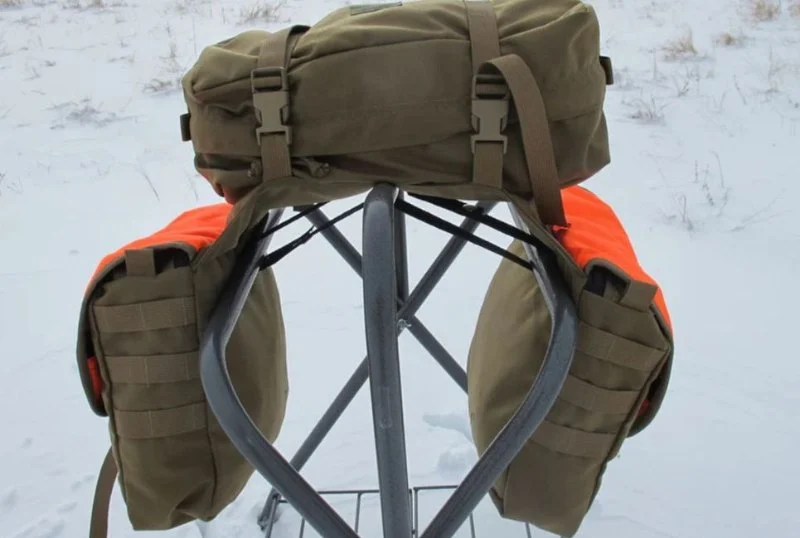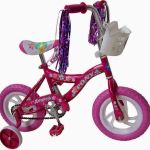
Choosing the Best Saddle Bag for Your Needs
- 1-Understanding Saddle Bags
- 2-Factors to Consider When Choosing a Saddle Bag
- 3-Best Saddle Bags for Different Cycling Needs
- 4-How to Choose the Perfect Saddle Bag for You
- 5-Maintenance and Care for Your Saddle Bag
1-Understanding Saddle Bags
Saddle bags are an essential accessory for cyclists, especially those who frequently go on long rides or tours. These compact bags attach to your bicycle's saddle and are designed to carry your essentials, such as tools, snacks, or extra layers of clothing. Their compact size makes them ideal for short trips, but they are also perfect for long-distance cyclists who prefer not to carry bulky gear. Saddle bags come in a range of styles and sizes, making it important to choose the one that best suits your cycling needs.
2-Factors to Consider When Choosing a Saddle Bag
Choosing the right saddle bag requires considering several factors to ensure it fits your cycling style and needs. Here are the key things to keep in mind:
1. Size and Capacity
The size of the saddle bag depends on what you plan to carry. For shorter rides, a small bag for essentials like a spare tube, tire levers, and a multi-tool is sufficient. For longer trips, however, you might need a larger bag to accommodate extra gear, such as food, clothing, and a small pump. Make sure the bag has enough space but isn’t too bulky for your comfort.
2. Material and Durability
Saddle bags are made from various materials, such as nylon, polyester, and leather. Nylon and polyester are lightweight and weather-resistant, making them great for all-weather conditions. Leather bags offer a classic look but may require more maintenance. Look for a material that suits your riding conditions and how much wear and tear you expect.
3. Mounting System
Different saddle bags have different mounting systems. Some use Velcro straps to secure the bag to the saddle and seat post, while others use clips or buckles. Choose a system that you find easy to use and that keeps the bag securely in place during your ride. A bag that shifts around or feels loose can be uncomfortable and distracting.
4. Waterproofing
If you ride in rainy conditions or encounter puddles, look for a waterproof or water-resistant saddle bag. Many bags come with built-in rain covers or are made from materials that prevent water from entering. A waterproof bag ensures that your gear stays dry, even during unexpected showers.
3-Best Saddle Bags for Different Cycling Needs
There are various types of saddle bags, each designed for different types of cyclists. Here are some of the best options:
1. For Commuters
If you're a commuter, you'll need a saddle bag that can carry a few essentials but isn’t too bulky. Look for small, streamlined bags that can hold a spare tube, tools, and maybe a light jacket. Bags like the Lezyne Road Caddy or Topeak Aero Wedge are popular for commuters, offering enough space without being overly large.
2. For Touring Cyclists
Touring cyclists need more space to carry gear such as extra food, a pump, and a rain jacket. A larger saddle bag like the Ortlieb Saddle Bag or the Banjo Brothers Seat Bag is a great choice. These bags offer a good balance of space and weather resistance, with mounting systems that stay secure even on rough terrain.
3. For Mountain Bikers
Mountain bikers often ride in more rugged conditions, so they need a durable saddle bag that won’t get in the way of their performance. A small, tough bag with secure mounting like the Chrome Mini Metro Bag or the Evoc Saddle Bag is ideal for carrying essential tools and a spare tube without being cumbersome.
4-How to Choose the Perfect Saddle Bag for You
When selecting the best saddle bag, think about how long you typically ride and what you need to bring with you. Consider the type of cycling you do and the conditions you ride in. A good saddle bag should fit comfortably without causing discomfort or shifting during your ride. Also, check for added features such as reflective elements or attachment points for lights.
5-Maintenance and Care for Your Saddle Bag
Taking care of your saddle bag can help extend its lifespan and ensure it remains functional and clean. Here are a few maintenance tips:
1. Clean Regularly
After every ride, wipe down your saddle bag to remove dirt, dust, and debris. For leather bags, use a soft cloth and a leather cleaner. For synthetic materials, a damp cloth or mild soap solution will do the trick.
2. Store Properly
When not in use, store your saddle bag in a cool, dry place away from direct sunlight. Avoid storing it in areas with high humidity, as this can cause mold or mildew to develop.
3. Check for Wear and Tear
Inspect your saddle bag regularly for signs of damage, such as fraying straps or cracks in the mounting system. Repair any issues as soon as possible to prevent further damage.
Choosing the right saddle bag is crucial for your comfort and convenience during cycling trips. Whether you're a commuter, touring cyclist, or mountain biker, the perfect saddle bag will enhance your ride and keep your essentials safe and accessible. For personalized recommendations, visit Cycling Guider to find the best saddle bags for your needs.







 Billet BMX5.0 (2 reviews)
Billet BMX5.0 (2 reviews) Far East Children Bicycle Factory1.0 (1 reviews)
Far East Children Bicycle Factory1.0 (1 reviews) Archer Motorsports, Inc.4.0 (8 reviews)
Archer Motorsports, Inc.4.0 (8 reviews) YEP Bike Works4.0 (55 reviews)
YEP Bike Works4.0 (55 reviews) Gorham Bike & Ski4.0 (498 reviews)
Gorham Bike & Ski4.0 (498 reviews) Alchemy Bikes4.0 (37 reviews)
Alchemy Bikes4.0 (37 reviews) How to Teach Kids to Ride a Bike: A Step-by-Step Guide for Parents
How to Teach Kids to Ride a Bike: A Step-by-Step Guide for Parents Tips for Riding on Busy City Streets: Smart Strategies for Urban Cyclists
Tips for Riding on Busy City Streets: Smart Strategies for Urban Cyclists Best US National Parks for Mountain Biking: Ride Epic Trails Across America
Best US National Parks for Mountain Biking: Ride Epic Trails Across America Best Aero Helmets for Time Trials and Racing
Best Aero Helmets for Time Trials and Racing How to Clean and Lubricate Your Bike Chain Like a Pro
How to Clean and Lubricate Your Bike Chain Like a Pro 10 Must-Have Items for Long-Distance Cycling Trips
10 Must-Have Items for Long-Distance Cycling Trips